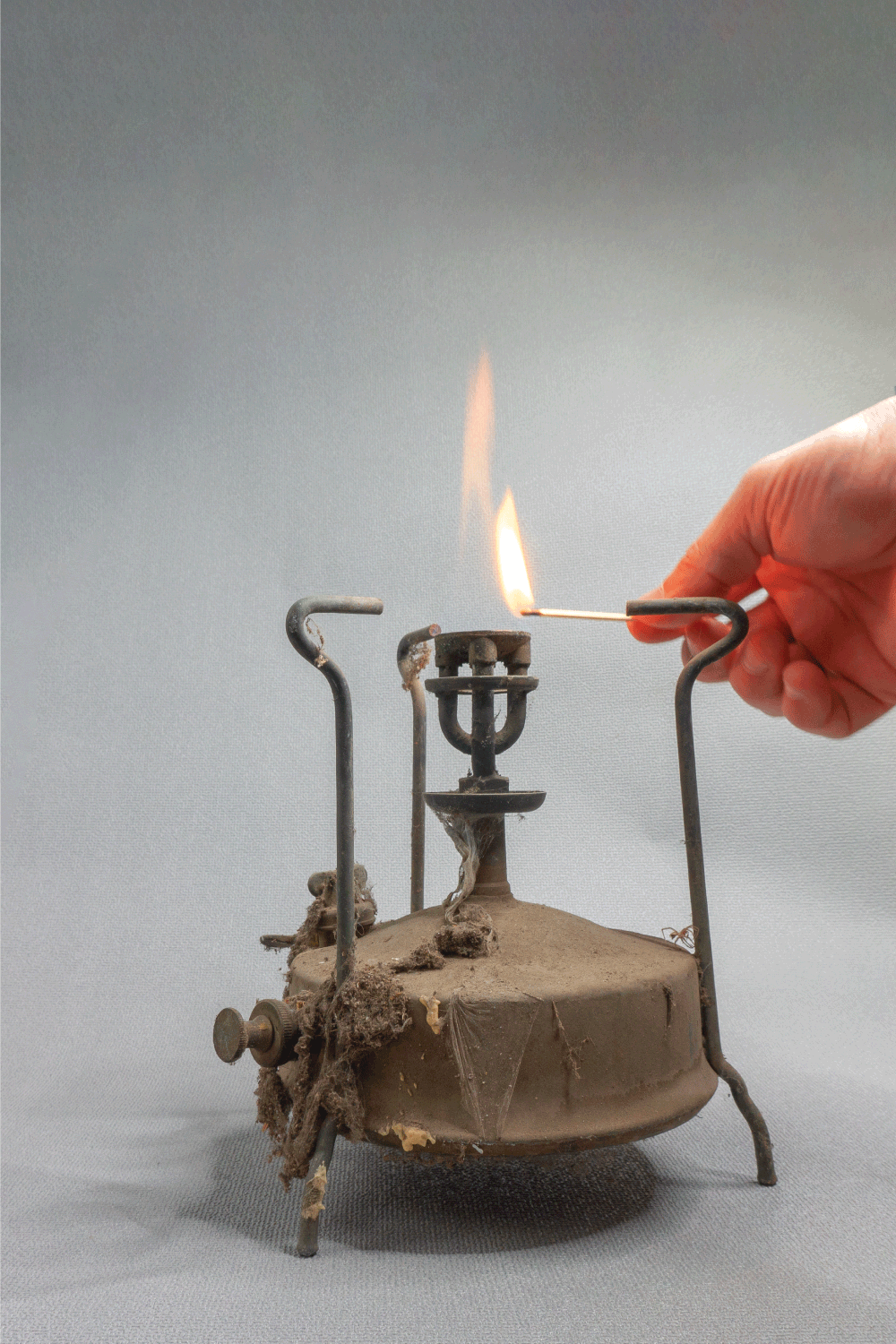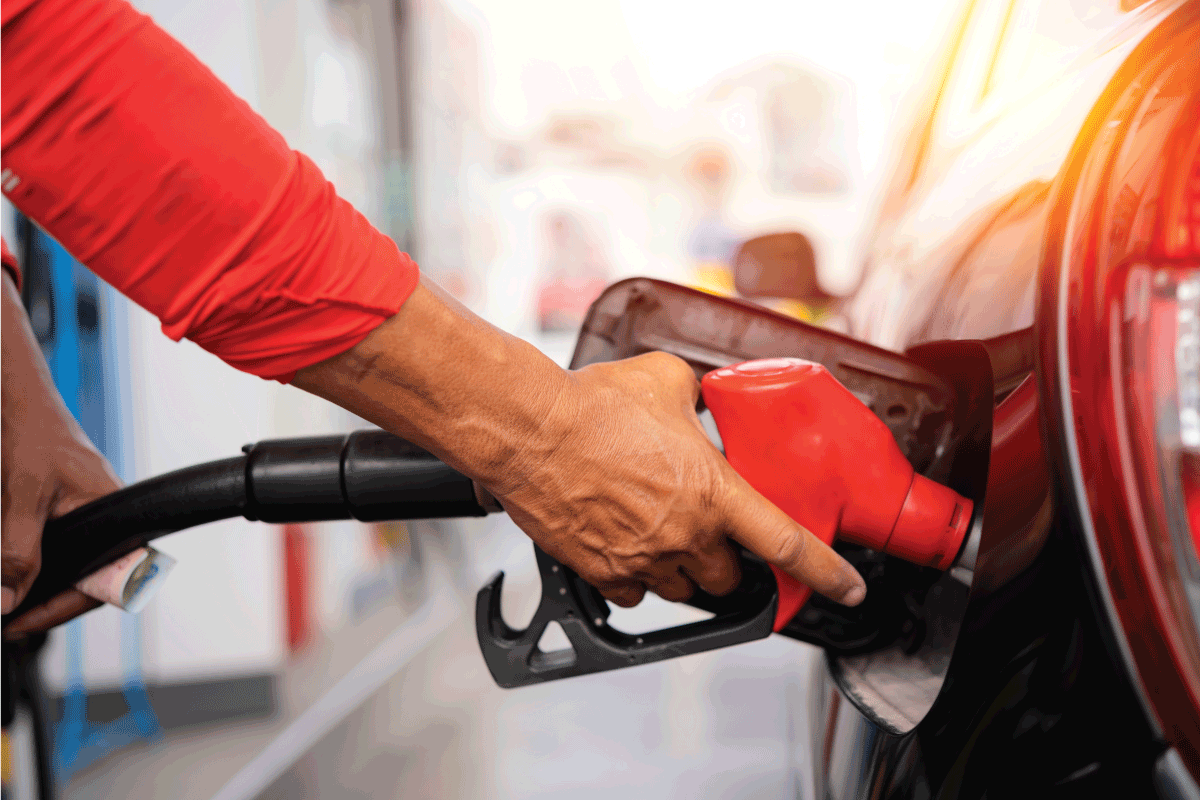If you are unsure if a flammable substance is gasoline or kerosene, testing is necessary to identify the substance and ensure your safety. This is particularly important since burning gasoline in a kerosene oil heater could result in an explosion. Here is what we discovered after doing thorough research.
To quickly and easily identify if what you have is kerosene or gasoline, check the following:
- Color: Kerosene is typically clear as water.
- Smell: Compared to kerosene oil, gasoline has a significantly stronger smell.
- Flammability: Kerosene oil doesn't ignite right away as gasoline does.
Gasoline and kerosene are both petroleum-based liquids meant for combustion. Keep reading as we delve into distinguishing between the two mixtures. We'll outline the process and everything else you need to know about the topic. So let's start!
Easy ways to distinguish kerosene from gasoline
You can tell kerosene from gasoline by simply observing these three properties:
![An image of two red plastic gas canisters. How To Tell Kerosene From Gasoline [Quickly And Easily]](https://hvacseer.com/wp-content/uploads/2022/11/An-image-of-two-red-plastic-gas-canisters.-How-To-Tell-Kerosene-From-Gasoline-Quickly-And-Easily.png)
Color
A quick visual examination will make kerosene stand out from other fuels. Good-quality kerosene displays a bright, transparent, and solid-free colorless property that resembles that of tap water.
Smell
You can tell the difference by carefully smelling (but not sniffing) both fluids. Kerosene oil smells much weaker than gasoline, although you may not feel confident with this method if you do not have such a strong sense of smell.
Flammability
Drop in a lit match into a cup with a few drops of gasoline and another cup with kerosene drops. See which one will ignite. Kerosene oil does not instantaneously ignite as gasoline does. As a responsible adult, make sure there are no kids or pets nearby because this exercise could pose fire hazards.
With a flash point of 100 degrees Fahrenheit, kerosene is far less flammable than gasoline. However, gasoline (also known as petrol) has a flash point temperature of -40 degrees Fahrenheit, making it incredibly flammable.

Additional Test
This test is not as quick as it takes approximately an hour to accomplish. Transfer a small amount of each liquid to a cup. Place the cups outside in a well-ventilated place for roughly an hour (because gasoline fumes are flammable).
Inspect the liquid to determine if it is still in the cup or if it has evaporated or is about to disappear. Kerosene must heated to evaporate, but gasoline disappears into the air much more quickly when it is cooler.
Composition and Drawbacks of Kerosene
Hydrocarbons are mixed together to form kerosene chemically. Depending on where it came from, it can contain anywhere from 10 to 16 distinct hydrocarbons, each of which has 10 to 16 carbon atoms in a single molecule.
With a density of 0.78 to 0.81 g/cm3, kerosene has a thin viscosity (gram per cubic centimeter). Although paraffin has a density of 0.8 g/cm3 and the two oils are essentially the same, it has a density of 0.82 g/cm3, so 0.81 g/cm3 is a good compromise.
Kerosene has a number of drawbacks, one of which is increased greenhouse gas emissions. Additionally, it is a non-renewable oil. If inhaled frequently, kerosene fumes can damage the skin and lead to lung ailments. The odor can linger for a long time despite intensive cleaning.
Check this Kerosene Container on Amazon.

Composition and Drawbacks of Gasoline
Gasoline is a mixture of flammable hydrocarbons, albeit the precise chemical makeup changes depending on the grade or octane rating. The value of this octane rating, which identifies the fuel's quality, is based on the proportions of two compounds in gasoline.
These compounds (iso-octane and regular heptane) share the same chemical formula but have slightly different structures and qualities. The octane number and gasoline quality increase as the amount of octane in the fuel increases.
Because the gasoline is of a greater caliber, it will ignite when caused by a spark from the spark plug and not too soon as a result of piston compression. The maximum amount of ethanol that an ordinary vehicle engine can still run on is 10%, hence Canada allows 87-Octane gasoline to contain up to 10% ethanol.
Furthermore, gasoline has a high energy density as a result of its unique composition. Due to its high energy density, gasoline is a valuable fuel since it can provide a lot of useful energy from a small amount.
Gasoline creates air pollution, which contributes to global warming. Small amounts of gasoline vapor can also cause headaches, nausea, vomiting, dizziness, confusion, and irritations of the nose, tongue, throat as well as stomach. Rashes, redness, and swelling are a few results of coming in contact with gasoline on the skin.
Click here to see this gasoline gallon on Amazon.
What are the Uses of Kerosene and Gasoline?
In nations where coal and biomass (wood, manure, and animal dung) are the main sources of home energy, kerosene is frequently used indoors without chimneys or smoke hoods.
Kerosene is one of the best lighting fuels. Kerosene lamps are popular with campers since they last a long time, and kerosene has recently found a new, significant application as fuel for jet aircraft.
One of the main types of fuel used in the US is motor gasoline. It is also the main output of oil refineries here, although small amounts of ethanol is present in the majority of finished motor gasoline sold for vehicles in the United States.
Is kerosene cheaper than gasoline?
Kerosene is significantly less expensive than gasoline, making it a more cost-effective fuel for airplanes. Airlines must employ a less expensive fuel source without sacrificing safety because flights are an expensive enterprise.
At times, you can purchase kerosene for less than half the cost of a gallon of gasoline. This is another factor that has contributed to kerosene's rise to prominence as the fuel of choice in the aviation sector, along with its greater flash point, lower viscosity, and lower freezing point.
Why kerosene is not used in cars?
Since kerosene is less refined and is more similar to diesel fuel, higher temperatures won't cause it to evaporate. This makes combustion more difficult than it is with gasoline.
Can I use gasoline instead of kerosene?
You should not use gasoline instead of kerosene in your heaters. The main risk with this is fire. Take appropriate caution when storing combustible substances or refueling to prevent potential danger.
What does kerosene do to a gas engine?
In cold weather, kerosene will make it difficult for a gasoline engine to start, but after it has warmed up, it will function just fine as a motor fuel. Due to the absence of benzene, a potentially toxic chemical, kerosene is a superior cleaning agent and is far safer for skin contact than gasoline.
![canister and fuel in test tubes on black background. How To Tell Kerosene From Gasoline [Quickly And Easily]](https://hvacseer.com/wp-content/uploads/2022/11/canister-and-fuel-in-test-tubes-on-black-background.-How-To-Tell-Kerosene-From-Gasoline-Quickly-And-Easily.png)
Wrapping Up
While there are a few minor distinctions between gasoline and kerosene, each has its own advantages. We hope our discussion above has given you an insight into how to quickly and easily distinguish kerosene from gasoline.
If you enjoyed reading this article, you might want to check out these related posts:


